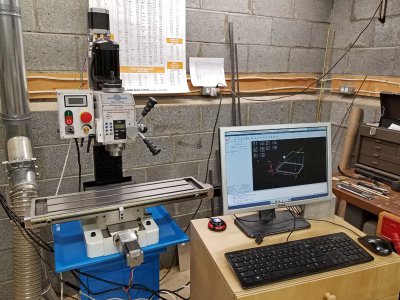- Joined
- Mar 10, 2020
- Messages
- 7
I bought a conversion kit from Heavy Metal CNC and Bruce recommended using oil on the ball screws. I am using Mobil Vactra #2 on the ways and ball screws. I give all the ways and ball screws a little shot everytime before starting machining.
For reference, I use a Teflon (w/ solvent carrier) dry lube on my 3D printer ball screws, and Nye Lubricant Rheolube on the guide rods. Runs like a top, but its much lower forces so you could probably use just about any lubricant and be OK.
For reference, I use a Teflon (w/ solvent carrier) dry lube on my 3D printer ball screws, and Nye Lubricant Rheolube on the guide rods. Runs like a top, but its much lower forces so you could probably use just about any lubricant and be OK.


 All 3 axes have been installed!!! I very happy I decided to get Dave's kit. It saved me countless hours of trial and error and machining.
All 3 axes have been installed!!! I very happy I decided to get Dave's kit. It saved me countless hours of trial and error and machining.